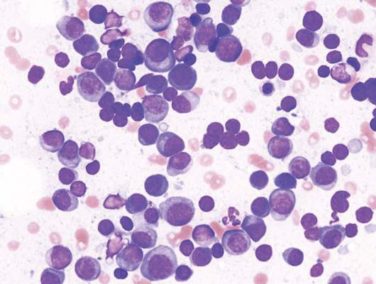FROM JOURNAL OF CLINICAL ONCOLOGY
A biomarker panel of circulating tumor cell count plus lactate dehydrogenase level met criteria as a surrogate for overall survival in individual patients with castration-resistant prostate cancer, according to research published online March 23 in the Journal of Clinical Oncology.
Recent progress in prostate cancer therapy has created the need for reliable post-treatment outcome measures that are surrogates for survival to guide patient management and to aid in the regulatory approval process. Investigators sought to identify an efficacy-response surrogate, to be confirmed in future trials, within the phase III clinical trial for abiraterone acetate plus prednisone vs. prednisone alone for patients with castration-resistant prostate cancer.
“Such a surrogate would shorten drug development times and eliminate the potential confounding effects of post protocol therapy on survival,” wrote Dr. Howard I Scher, head of the genitourinary oncology service at the Sidney Kimmel Center for Urologic and Prostate Cancers at Memorial Sloan Kettering Cancer Center, New York, and associates.
The trial’s primary endpoint, overall survival, was significantly greater in patients who received abiraterone acetate plus prednisone vs prednisone alone (17.7 vs. 15.1 months, respectively, P = .035). This finding laid the foundation to evaluate a surrogate endpoint for survival according to the Prentice criteria, Dr. Scher and his associates wrote (J. Clin. Onc. 2015 March 23 [doi:10.1200/JCO.2014.55.3487]).
The four Prentice criteria for individual patient-level surrogacy are that the treatment has significant effects on the endpoint as well as the biomarker, the biomarker effects the endpoint, and the effect of the treatment on the endpoint is captured by the biomarker.
Measured at 12 weeks, circulating tumor cell (CTC) count and lactate dehydrogenase (LDH) level were used to categorize the 711 patients as low risk (CTC < 5 cells/7.5 mL of blood; any LDH), medium risk (CTC greater than or equal to 5 cells/7.5 mL of blood; LDH less than or equal to 250 U/L), and high risk (CTC greater than or equal to 5 cells/7.5 mL of blood; LDH > 250 U/L). Patients classified as low risk had 1- and 2-year survival of 82% and 46%, compared with 25% and 2% for patients classified as high risk by the surrogate.
The biomarker panel of CTC count plus LDH level satisfied the four Prentice criteria, thereby demonstrating individual patient-level surrogacy and supporting its use as a clinical trial endpoint. Other ongoing phase III trials will generate evidence to validate the surrogacy, the authors said.




